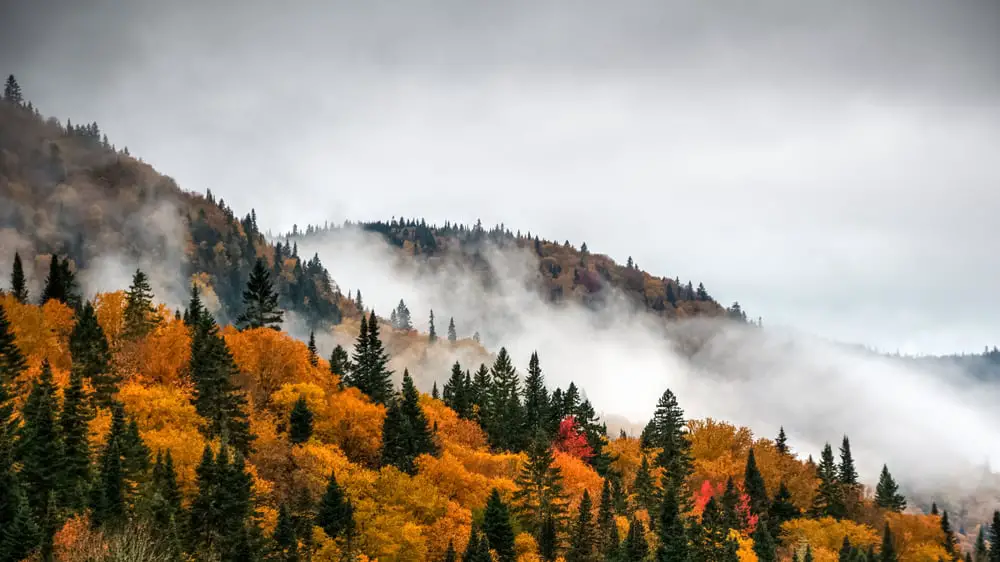
Quebec is wealthy in history, culture, and natural beauty. Much of its beauty is attributed to its forests. They have proved to be a tremendous boon to the economy of the villages, towns, and cities that border them.
As a hiking enthusiast and lover of the outdoors, I have often considered the forest a second home! Their majesty can seldom be put into words, yet they are essential to the survival of Quebec!
Quebec is divided into three forest types: Northern temperate forests, Arctic forests, and Boreal forests. The Northern Forests consist of deciduous and mixed-forest regions. Boreal Forests are diverse with a tundra region. Arctic Forests has permafrost with no trees, contains fauna and flora.
Every forest in Quebec is vibrant within its ecosystem. It is host to many interesting facts that speak of its uniqueness. So, what types of forests are there in Quebec?
Table of Contents
- Types of Forests in Quebec
- What Biomes Exist In Quebec?
- What Kind Of Trees Are In Quebec?
- What Fauna Can You Find In Quebec?
- How Do The Forests Of Quebec Affect Seasons?
- What Flora Grows In The Forests Of Quebec?
- Some Of Quebec’s Greatest Hiking Trails
- Quebec’s Endangered Fauna
- What Are Quebec’s National Parks?
- How Does Quebec Look After Their Forests?
- Wildfires In Quebec’s Forests
- Conclusion
Types of Forests in Quebec
The forests of Quebec are somewhat extreme, especially in regards to climatic conditions. They tend to be either very hot or very cold, scarcely being somewhere in the middle. In January for example, temperatures are usually around −11 º°F (−24 °ºC), and in February it is at an average of 14 °ºF (−10 °ºC) and rising afterward.
Northern Temperate Forest has a deciduous forest region containing hardwood trees. Windthrow is common in this region, whereby trees are uprooted because of the strong winds and storms traveling through the area. The Northern Forests are known for their abundance of Maples, Hickory, and Basswood vegetation.
The Boreal Forest comprises three diverse sub-zones: Boreal, Taiga, and Tundra. It has a staggering amount of density and mainly contains softwood, deciduous trees like Birch and Spruce. This region suffers from an infestation of the Spruce Budworm that defoliates and kills many acreages of Spruce and Balsam Fir.
Since the western part of The Boreal Forest is dryer, fires tend to be a problem in this area. However, due to the fires, more Trembling Aspen and Jack Pine trees grow only in this specific area. It also means fewer Fir Trees in the area.
The Arctic Forest is a flat, icy-cold plane of frozen landscape that has permafrost. However, not every inch of the soil is frozen; the sunshine can still get through to the soil. Despite all the ice, flowers, herbs, shrubs, and other vegetation in the region can grow their roots down to retain the nutrients from the soil.
The vegetation that grows here is an important food source for animals that migrate during winter seasons, the caribou, and other migrating birds. Because of their nutritional value, some people even gather them to make herbal teas for treating colds and flu.
What Biomes Exist In Quebec?
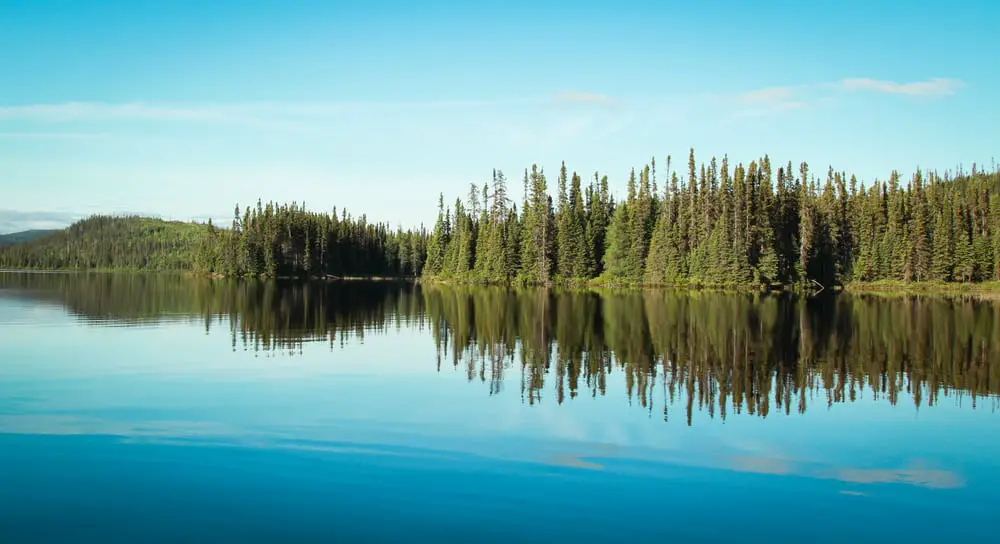
The bedrock in the Northern Temperate Forests is ancient and is thought to be up to 4 billion years old! It is separated into deciduous and mix-forest zones. The deciduous zone has warm climates and strong winds, so windthrow is a common occurrence. The mix-forests boast an incredible amount of different flora.
The Arctic “Forests” actually have no trees, and there is perpetual permafrost. However, it does have tundra vegetation like herbs, mosses, and lichens. The forest’s roots penetrate the deposits of nutrients left behind by the previous glacial period when ice completely covered Quebec with a depth of one kilometer.
Quebec’s Boreal Forests is quite dense. It consists of both Boreal and Tundra sections. Vegetation is found in abundance, particularly in mosses and shrubs. Wildfires are the biggest concern with Boreal Forests due to their abrupt climate changes. They are more common on the west side of the forest.
What Kind Of Trees Are In Quebec?
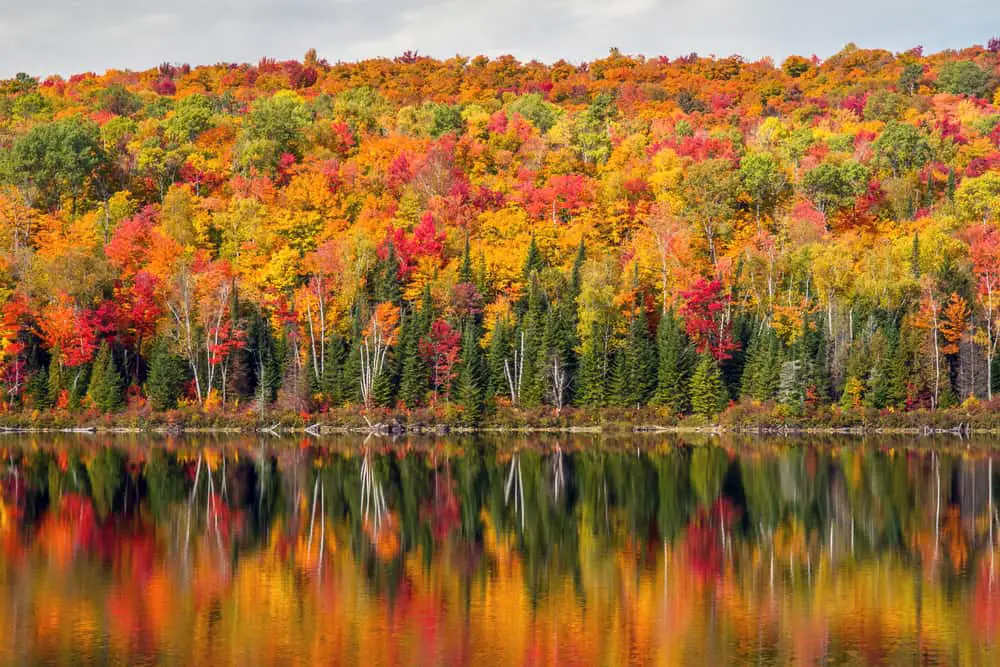
The Arctic regions may not have trees, but it does have a healthy amount of vegetation. Bearberry, Labrador Tea, and Diamond Leaf Willow are just some of these plants. They are used in making teas, treating colds, and for animals passing by when migrating because they are rich in vitamins and calcium.
Northern Temperate regions’ excellent diversity has many maples and hickory trees. These include Black Maple, Shagbark Hickory, and Swamp White Oak, amongst others. Black maple, in particular, is cut up and sold with sugar maple as lumber. Furthermore, these trees are used to make delicious maple syrup!
The Boreal Forests mostly contain softwood like Fir and Spruce because they are birch and moss domains. In the southern region, you’ll find yellow birch and red maple in abundance. These trees are preferred for woodworking projects. Yellow Birch is especially valuable because it is used for tool handles, interior doors, and flooring.
What Fauna Can You Find In Quebec?
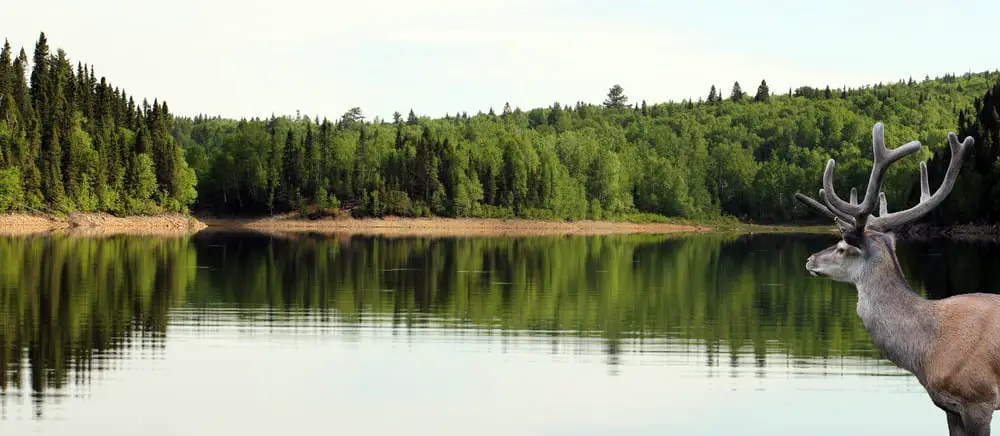
With nearly every forest consisting of more than one kind of terrain and climate, Quebec’s forests boast an explosive variety of fauna! You may find beavers, black bears, Caribou, Moose, Whales, White-tailed deer, Puffin, Wolves, and the Northern Gannet.
A beaver can usually be seen in one of Quebec’s numerous national parks. Black bears tend to avoid confrontation, but you can have a guide take you to see one. Caribou are the hardest to find as they often travel over tundra regions. If you’re looking to spot a moose, you try The Jacques Cartier Park in Quebec City.
There are 13 kinds of blue whales in Quebec, and you can usually find them between May and October when it’s warmer. The White-Tailed deer can be seen throughout all southern Quebec. The Northern Gannet’s splendor can be admired in North-Eastern Quebec. Puffins have a large colony at the lower North Shore.
How Do The Forests Of Quebec Affect Seasons?
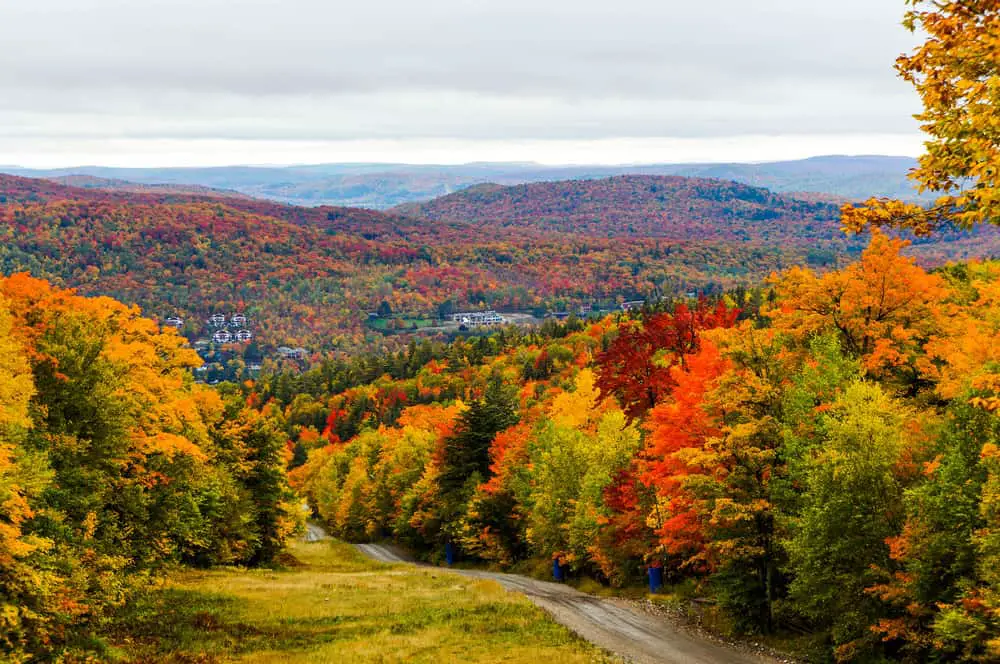
Spring, Summer, Autumn, and winter form part of the Quebec calendar, with conditions varying by location. They are then classified according to insolation, temperature, and snow and rain precipitation. The forest regions, in particular, are a solid contributor to its climatic temperatures.
Temperatures in Quebec can reach 35 °ºC (95 °ºF) in the summer and 40 °C (40 °F) in the winter during periods of extreme heat and cold. There is an average of 140 frost-free days each year in places like Montreal, whereas the extreme north has less than 80.
From the northwest, huge sections of air rush down. The air is forced to pass through the cold Labrador Current, resulting in chilly summers in the northeast. Furthermore, throughout the summer, humid air rising from the Gulf of Mexico causes heat waves. Due to these reasons, there is a lot of snow in the winter.
What Flora Grows In The Forests Of Quebec?
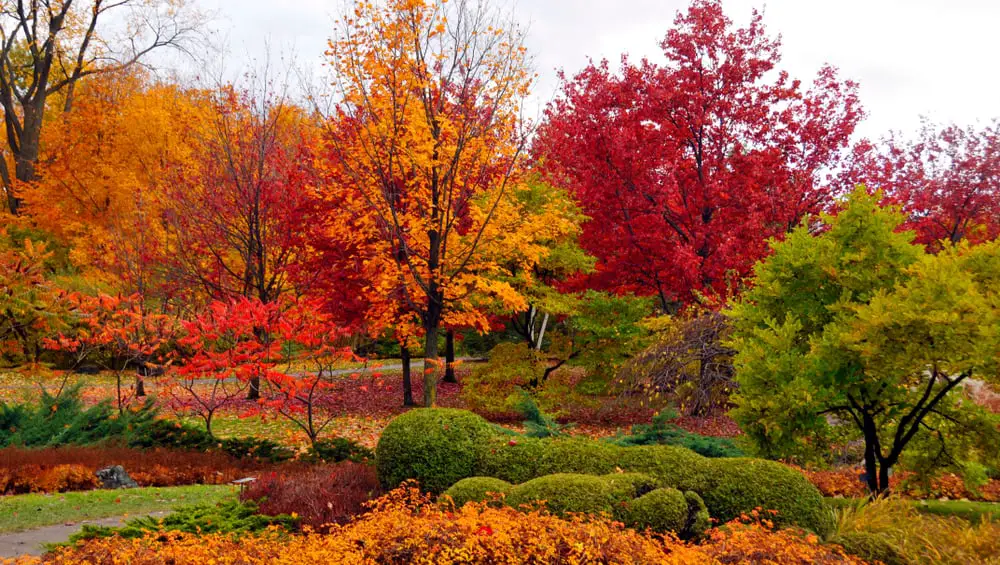
The Hairy Beard-Tongue may have a questionable name, but its subtle purple beauty is undeniable. This unique flower produces purple petals during Spring and red ones in Autumn. It can be found in places with thin, dry, or no soil and temperate and mixed-forest areas.
Heart-Leaved Aster is another purple-blue flower native to Quebec. A vast supply of it can be found in the southeast. This flower’s petals are initially white, then change to a light-yellow hue before turning purple or blue during August and October.
Sweet Alyssum is known as “ground plants” that are generally used to add a splash of color to ground sections. They can be found in white, pink, and purple and bloom during summer. It can thrive in dry, sunny areas and make perfect gifts of appreciation and admiration!
Some Of Quebec’s Greatest Hiking Trails
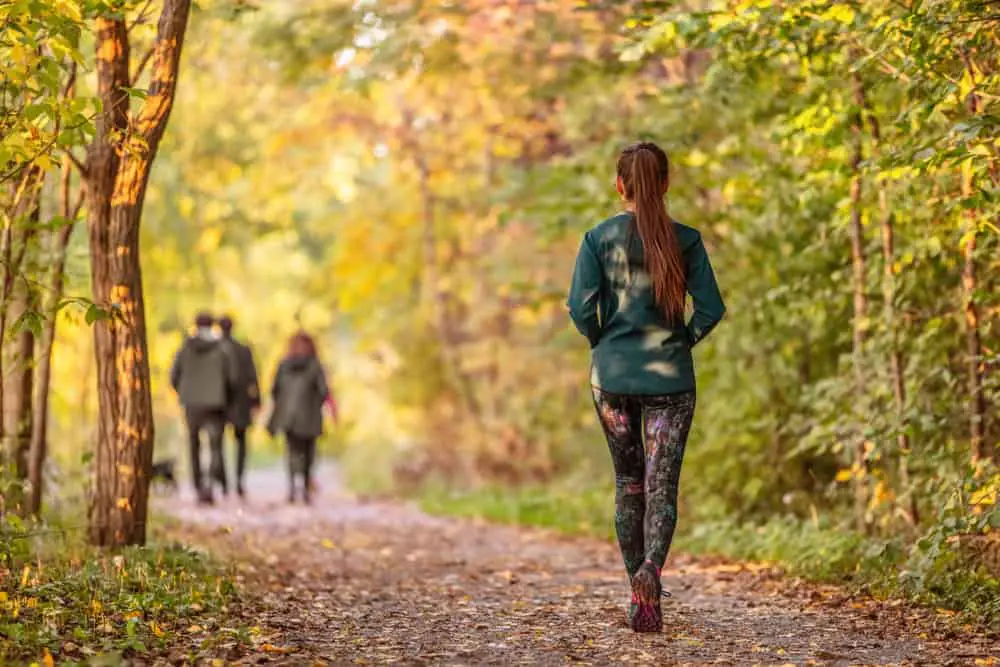
Mount Royal Loop, Montreal. This hiking trail takes you high a mountain peak and rewards you with a picturesque view of magnificent Montreal. You’ll encounter maple, oak, and ash trees along the way, as well as the giant-sized Mount Royal Cross towering at 100 feet. It is 1.4 miles long with a completion time of one hour.
George Trail, Eastern Townships. With a staggering amount of colorful flora and pleasant smells, this hiking trail is one of the most popular. However, its footbridge is also a fan-favorite. At night, this trail is known for becoming more fantasy than forest. It’s 2.2 miles and takes approximately 90 minutes to complete.
Mont Jacques-Cartier, Gaspé. This mountainous trek is a caribou habitat, doubling as the highest summit in southern Quebec. (4,160 feet in total). Bring a camera to take pictures of this spectacular view. Who knows, you may be lucky enough to snap a few shots of caribou, too! It’s 5.3 miles and takes 4-5 hours to complete.
Quebec’s Endangered Fauna
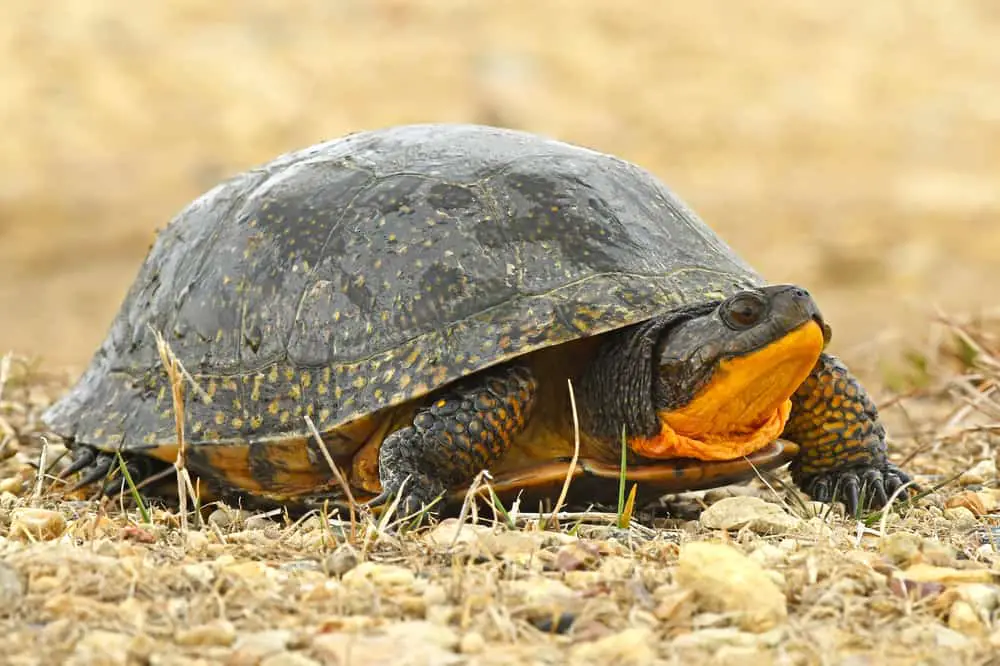
The Blanding Turtle is distinguishable by its bright-yellow throat and pointed attributes. Furthermore, its shell has yellow spots or lines across its surface, and the bottom of the shell is also bright-yellow. Populations are native to southwestern Quebec and are protected by the Species Risk Act.
Volunteers from Nova Scotia have started protecting nests, and researchers are rearing hatchlings in areas where the Blanding Turtle population has greatly diminished. Outreach programs in Ontario are also underway.
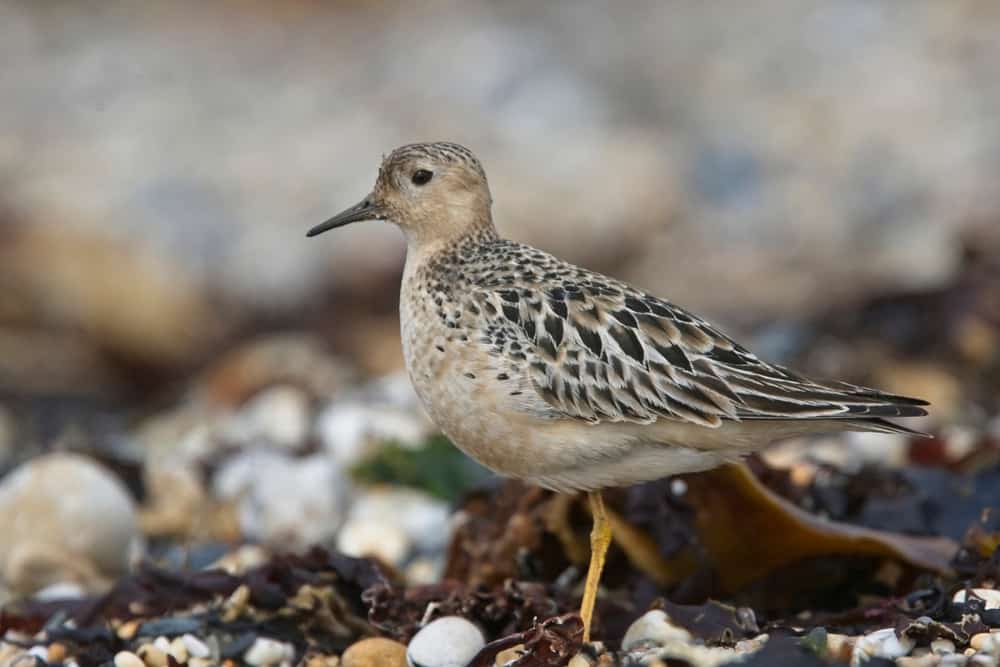
The Buff-breasted Sandpiper is an average-sized bird with a beige-colored face and body. Their wings and back have brown and black speckles. Sandpipers’ dwindling numbers are a result of hunting and loss of habitat. These birds are listed under the Species Risk Act as “Special Concern.”
What Are Quebec’s National Parks?
Quebec has a mind-blowing 24 national parks altogether, so which one should you choose? Here are three:

Pingualuit National Park is one of the earth’s most remarkable geological wonders! It boasts a meteor crater filled to the brim with deep blue, crystal-like water that glistens from the sun. Hiking and skiing are winners for activities you can do. In winter, ensure that you don’t miss the brilliant display of the Northern Lights.
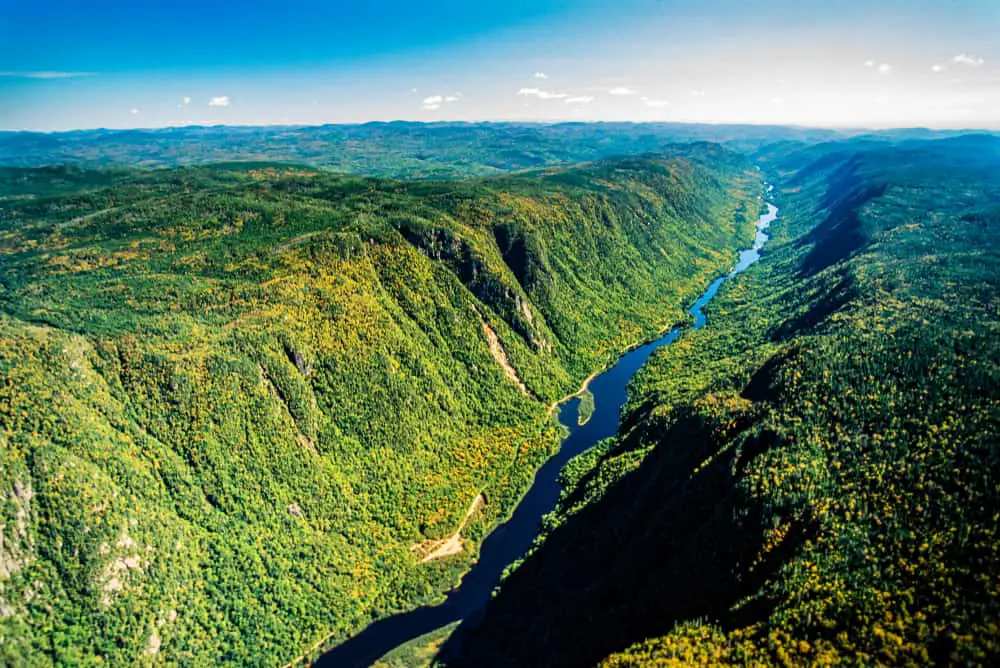
Parc national de la Jacques-Cartier glows green in splendor from the glacial canyons and lakes that almost mirror your reflection. This wonderful national park is home to many wildlife, including moose, deer, fox, and salmon. You’ll enjoy it here if you like kayaking, fishing, and hiking, and of course campfires and camp songs!
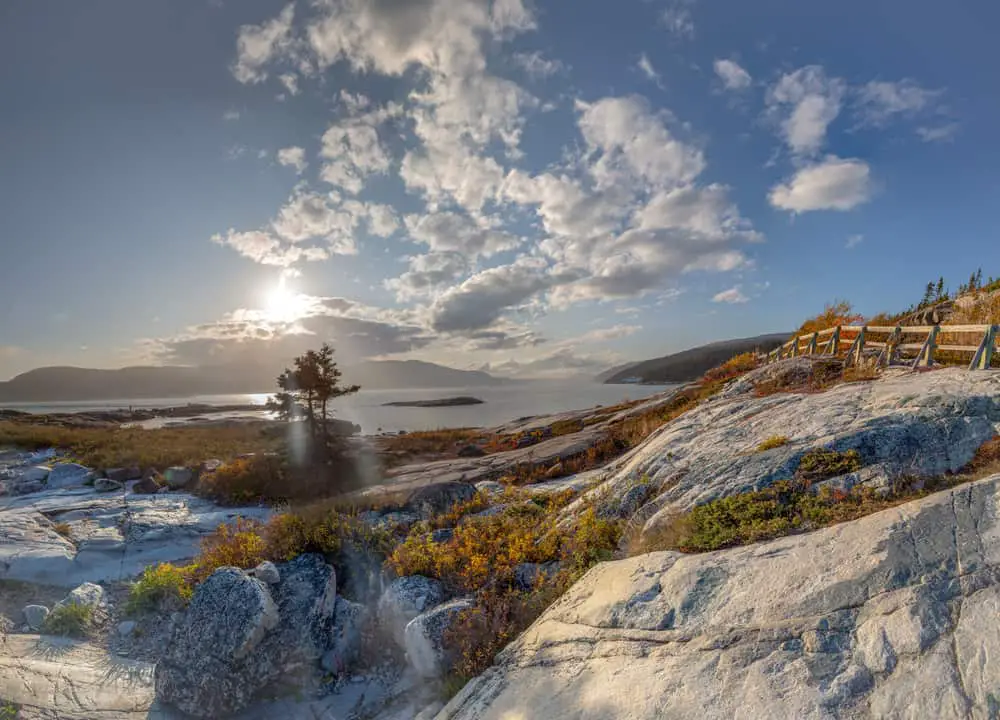
Saguenay-St.Lawrence Marine Park is one of three throughout the whole of Canada. It’s known for its excellent opportunities for whale-watching. Although you can go kayaking, boating, camping, or hiking, the purpose of this national park is to protect the surrounding marine life.
How Does Quebec Look After Their Forests?
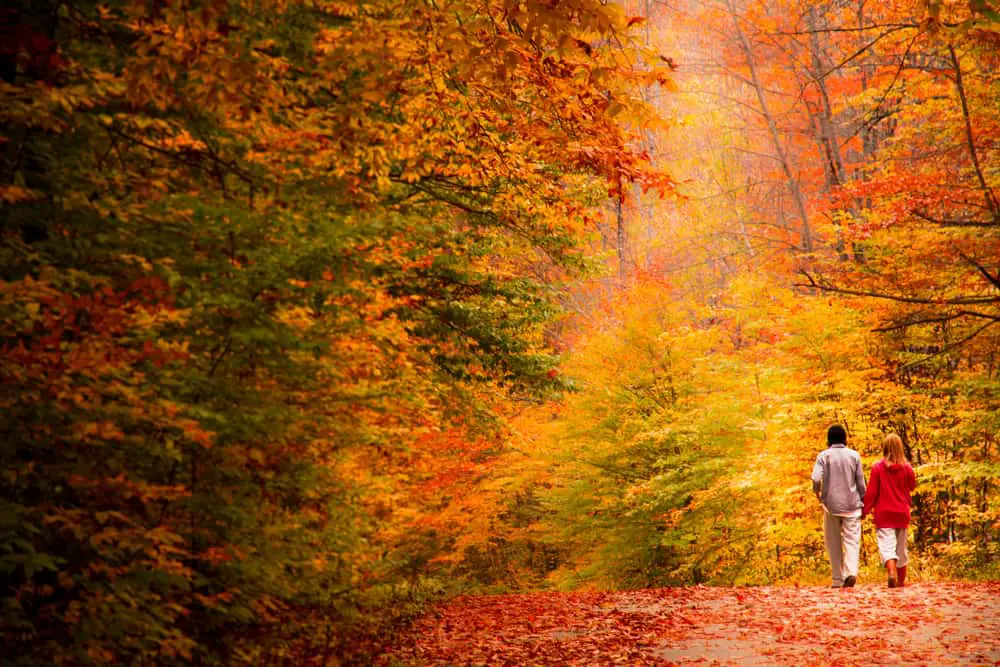
Forest preservation can be divided into two kinds: Forest Conservation and Forest Protection. Although their methods are different, their goals align in maintaining their forests’ ecosystems and preserving biodiversity. Forest Conservation involves activities, tools, and methods to sustain the forest during harvesting.
For example, companies must be careful to leave trees currently in use by wildlife. They should also ensure that they do not remove too much of a particular tree species in an area. Furthermore, their work is not to disturb or disrupt the natural needs of the wildlife.
Forest Protection is related to creating parks and putting them under legal protection from the industrial activity for preservation. Some examples include protected areas that offer wildlife passage to another area or habitat for endangered plants to live. Marine environments and historical sites also fall under this protection.
Wildfires In Quebec’s Forests
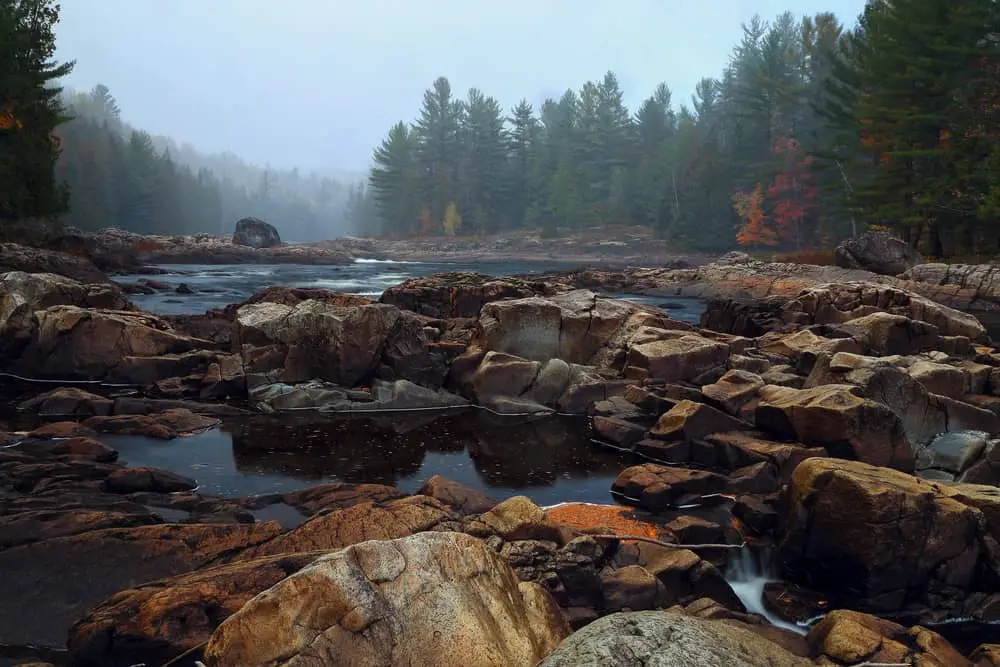
Forest fires are somewhat of a common occurrence throughout Canada, and Quebec is no different. An announcement was made by the Quebec government, in conjunction with the Society to protect forests against fire (SOPFEU), to ban open fires in twelve Quebec regions, save for a few.
The year 2021 has already recorded a whopping 329 fires that have affected 4,755 hectares of land. It is almost a vastly higher number than the previous 190 fires in 2020. Low precipitation and high temperatures during the early days of May and June have resulted in arid conditions.
During these times, rivers’ water levels drastically fall and adding to the dry climatic conditions by reducing the amount of rainfall.
Conclusion
Quebec has a treasure trove of natural wealth. They know the value of their forests and have chosen to put infrastructure and regulations in place to protect them. I do not doubt that these forests will continue to flourish and work in harmony with their surrounding citizens.
Sources:
Quebec Ministry of Forests and Parks: Quebec: A Land of Forests
iNaturalist: Trees of southern Quebec and Ontario including adjacent eastern United States
Ask A Biologist: Tundra Plants
Sciencing: Why Is the Tundra so Important?
USDA SRS: Black Maple



